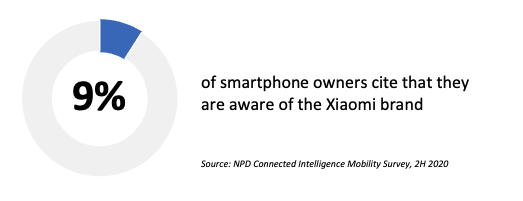
Xiaomi is off the blacklist?
According to a recent court filing, the U.S. Defense Department is getting ready to remove the Chinese technology giant Xiaomi from the government blacklist, which it was added to back in January 2021, right before the previous administration left the office. The previous administration highlighted Xiaomi as a national security threat, similar to Huawei and ZTE, due to their funding by the Chinese government/military. However, Xiaomi had previously made public statements declaring that it has no ties to the Chinese government with its funding coming from national and international private sources.
The NPD Take:
- Unlike its compatriots Huawei and ZTE, which build networking equipment alongside smartphones, Xiaomi’s tech product focus has always been consumer-centric, thus posing less threat to national security. Xiaomi’s removal from the U.S. Government’s trade blacklist does not grant the OEM a free pass card into the U.S. smartphone market, but the timing could not have been any better as all US carriers are actively seeking new vendor partners to fill in the void of LG.
- Xiaomi is one of the fastest-growing smartphone brands in many global markets except the US, where it has no presence except the globally sourced unlocked models sold via third-party sellers on Amazon or eBay. Should the OEM decide to make a push into the US market, building awareness for its brand and capturing shelf space may not be as challenging as it has been for other Chinese brands. According to the latest, NPD Connected Intelligence survey, close to ten percent (8.7% to be exact) of US smartphone users cite awareness of the Xiaomi brand. This is two percentage points higher than the brand recognition score of TCL, which has been a part of the Verizon lineup for over eight months in addition to controlling a substantial share of the TV market in the US.
- Xiaomi is one of the strongest smartphone makers when it comes to Direct-to-Consumer (DTC) sales. The brand runs thousands of its own-branded “Mi” stores in countries where it operates. There are over 5000 “Mi” stores operating in China and India alone, and the brand is keen to catch up with Apple in store count in several European countries. Xiaomi’s rich product mix, including smartphones, accessories, connected home products, TVs, electrical scooters, wellness products, and more, helps justify a scalable retail DTC model, and should the brand decides to make a play in the US, it will not be surprising to see many Mi stores popping up at shopping malls.
ZTE’s new flagship lacks US support
ZTE last week announced that its new Axon 30 Ultra flagship phone will soon be available for purchase in the US via its web store. The unlocked phone, which boasts Qualcomm’s top-end Snapdragon 888 chip and a 6.67-inch AMOLED display with 144 Hz refresh and HDR will start at $749 and include a free pair of ZTE LiveBuds, which typically retail for $40. Despite the announced US availability, the unlocked phone will not support any 5G networks in the US. Moreover, the Axon 30 can only run on AT&T’s 4G LTE network, and as it lacks support for the LTE bands for T-Mobile and Verizon.
The NPD Take:
- Despite being on the government’s blacklist, ZTE continues to fight for a spot in the US. The OEM previously launched new models through Consumer Cellular and Visible, and can take advantage of the current landscape changes due to LG’s departure and supply chain issues. On the other hand, releasing a flagship phone that not only lacks 5G support, as well as the essential 4G coverage on the nation’s two largest operators’ networks, will not help the cause.


